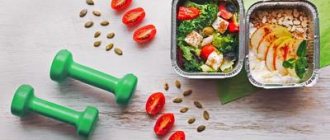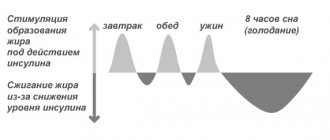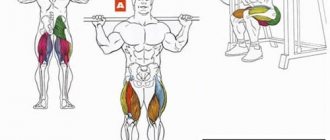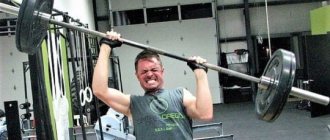The value of subcutaneous fat
Subcutaneous fat is a type of biological fat located between the muscles and the skin. It is formed as a result of a sedentary lifestyle, which is aggravated by poor nutrition (especially an excess of animal fats and fast carbohydrates).
Subcutaneous fat is located under the upper epidermal layers. Its main function in the body is to regulate energy balance. 1 g of subcutaneous fat contains 9 kcal. If the body does not have enough calories, it begins to consume them from fat cells, burning them and at the same time reducing fat content. This not only releases energy, but also allows internal organs and body parts to function normally. This fat reserve allows a person to survive for a long time under conditions of intense exercise and/or hunger strike.
Places where fat accumulates
Subcutaneous fat protects internal organs from the negative effects of a negative environment on them. So, it softens injuries during falls, impacts or exposure to high temperatures. If there is a sufficient level of fat, it is possible to ensure the mobility of the skin, which helps prevent its ruptures and other damage. The next function of subcutaneous fat is thermal insulation. Fat protects the human body from hypothermia.
Note! Seals, whales and other warm-blooded marine animals that live in cold regions have a dense and thick layer of subcutaneous fat.
Fat under the skin acts as a substance that produces hormones. Most often, adipose tissue synthesizes leptin and estrogens. In fat cells, reserve nutrients are accumulated and stored. The main ones are A, D, E and other fat-soluble vitamins. Female sex hormones – estrogens – are also located here. If a guy has an excess amount of adipose tissue in his body, his testosterone levels decrease, which activates a clearer manifestation of feminine traits.
Norm of subcutaneous fat
How to get rid of subcutaneous belly fat
The optimal content of subcutaneous fat in the human body depends on both his age and gender.
Norms of fat under the skin for men
| Age | Very good | Fine | Average | Badly |
| 10-14 | 11-16% | 16-21% | >21% | |
| 15-19 | 12-17% | 17-22% | >22% | |
| 20-29 | 13-18% | 18-23% | >23% | |
| 30-39 | 14-19% | 19-24% | >24% | |
| 40-49 | 15-20% | 20-25% | >25% | |
| 50-59 | 16-21% | 21-26% | >26% | |
| 60-69 | 17-22% | 22-27% | >27% | |
| 70-100 | 18-23% | 23-28% | >28% |
Women's norms of fat under the skin
| Age | Very good | Fine | Average | Badly |
| 10-14 | 16-21% | 21-26% | >26% | |
| 15-19 | 17-22% | 22-27% | >27% | |
| 20-29 | 18-23% | 23-28% | >28% | |
| 30-39 | 19-24% | 24-29% | >29% | |
| 40-49 | 20-25% | 25-30% | >30% | |
| 50-59 | 21-26% | 26-31% | >31% | |
| 60-69 | 22-27% | 27-32% | >32% | |
| 70-100 | 23-28% | 28-33% | >33% |
How to Determine Muscle Loss or Gain
Once you have measured your body fat percentage, you have the ability to determine muscle loss or gain. You can find out your "lean mass" by measuring your body fat % and your body weight. Since muscle tissue is the component of lean mass that is most subject to change, changes in lean body weight are primarily changes in muscle weight.
First of all, you need to weigh yourself on an accurate scale. This will make it possible to calculate the weight of the dry mass. After a certain period of dieting or working on a training program, it is necessary to repeat the measurements. Changing body weight to account for changes in body fat percentage will help determine muscle gain and/or loss.
Example for men: A man weighs 95 kg. Fat percentage -30%. We multiply 95 kg by 30% and get 28.5 kg, this is the weight of fat contained in the body. We subtract 29 kg from 95 kg and determine that the dry weight is 66.5 kg. After a month of regular training and proper nutrition, his weight dropped to 88 kg. Fat percentage - up to 25%. We determine 25% of 88 kg and get 22 kg. This is the weight of body fat. Subtract this from the 88 kg body weight and find out that his dry mass is 66 kg. This means he lost 0.5kg of muscle mass while losing 6.5kg of fat. This is a very good result. ;And means that his diet and exercise program are working very well for him.
Review of the calculations performed:
Before: Fat content = 30% and Total weight = 95 kg 95*0.30 = 28.5 kg, 95-28.5 = 66.5 kg dry weight
After: Fat content = 25% and Total weight = 88 kg 88*0.25 = 22 kg, 88-22 = 66 kg dry weight
Result: 66.5 - 66 = 0.5 kg - reduction in lean mass 28.5 - 22 = 6.5 kg - loss of fat
Example for women: Starting weight 68 kg. Fat percentage -30%. Multiply body weight by 30% and get 20.4 kg of body fat. Subtract this value from 68 kg of body weight and get a dry mass of 47.6 kg. After a month of a low-calorie diet, my weight dropped by 9 kg. The total weight was 59 kg. New measurements showed 27% body fat. Again, we multiply the total weight by 27% (this is 15.9 kg of fat) and subtract it from body weight - we get 43.1 kg of dry mass. Thus, dry weight decreased by 4.5 kg. Fat loss - 4.5 kg. That is, during the diet, the woman lost as much muscle as fat. This means that the chosen diet is not very suitable for her and requires adjustment. It is also necessary to choose the right training program.
Review of the calculations performed:
Before: Fat content = 30% and Total weight = 68 kg 68*0.30 = 20.4 kg, 68-20.4 = 47.6 kg dry weight
After: Fat Content = 27% and Total Weight = 59 kg 59*0.27 = 15.9 kg, 59-15.9 = 43.1 kg dry weight
Result: 47.6 - 43.1 = 4.5 kg - decrease in lean mass 20.4 - 15.9 = 4.5 kg - loss of fat
For those who have lost muscle and gained fat over years of inactivity, I can actually increase muscle mass while losing excess fat. For example, a 68-year-old man, 70 kg. Caliper measurements showed 28% fat. This is 19.6 kg of fat and 50.4 kg of dry mass. He has been exercising regularly for 4 months, including lifting weights, and following a healthy diet. After 4 months he weighs 68 kg. Fat percentage dropped to 18%. Multiplying the weight by the percentage of fat we get 12.2 kg of fat. Subtract this value from 68 kg and get 55.8 kg. Dry weight increased by 5.4 kg. In other words, the man gained 5.4 kg of muscle mass previously lost and lost 7.4 kg of fat .
Review of the calculations performed:
Before: Fat content = 28% and Total weight = 70 kg 70*0.28 = 19.6 kg, 70-19.6 = 50.4 kg dry weight
After: Fat content = 18% and Total weight = 68 kg 68*0.18 = 12.2 kg, 68-12.2 = 55.8 kg dry weight
Result: 55.8 - 50.4 = 5.4 kg - height dry weight 19.6 - 12.2 = 7.4 kg - fat loss
Determination of subcutaneous fat percentage
Body fat percentage
When answering the question of how to find out the percentage of subcutaneous fat, you should answer that the simplest and least accurate way is the photographic method. It involves taking photographs of a person's body and comparing them with images of other bodies of various sizes, which are usually used to visually approximate the content of subcutaneous fat.
In order to find out the content of subcutaneous fat, they use special online calculators, the sites of which are on the Internet. In order to calculate fat, you need to enter data on age, weight, height and volume. Since information in this case is obtained based on data on body volume, it is also not always accurate.
Fat percentage can be calculated using an online calculator
The most accurate method is hydrostatic weighing. The human body is placed in a bathtub filled with water. After this, the volume of displaced liquid is determined and compared with the mass of the body immersed in water.
Interesting. The negative side of this method is that it can only be carried out in a specialized institution that has the necessary equipment.
How to take measurements
To accurately measure your body fat percentage, you need to take 4 measurements.
Triceps area:
Triceps area. Between the shoulder and elbow joints. The fold is taken in the middle of the back of the shoulder, vertically.
Biceps area.
Biceps area. We take measurements in the same way as in the triceps area. We only form a fold in the middle of the shoulder on the front side.
Scapula area (back)
Back under the shoulder blade. The measuring location is just below the shoulder blade. Please note that the fold is taken at an angle of 45 degrees, as shown in the photo.
Waist
Waist. The location is just above the iliac crest, above the protrusion of the femur, slightly forward from the waist. The fold is formed almost horizontally, as shown in the photo.
Devices for determining subcutaneous fat content
How to reduce body fat percentage
A common way to calculate the proportion of subcutaneous fat in the human body involves the use of special electronic analyzer scales. Similar devices are now available in most modern fitness clubs. Using modern technology, they can check the content of muscle and fat tissue in the body. The principle of their operation is based on electrical impulses, which are based on determining the degree of resistance of certain tissues of the body during the passage of electrical impulses through them. Such impulses can be passed exclusively through organic mass, which does not contain fats. It is on this basis that data can be obtained. A similar meter can also be purchased for your home.
Should be considered! This method is also rarely highly accurate. Often the obtained values are erroneous.
Another device for measuring the percentage of fat under the skin is a caliper. This device can be found at the pharmacy. It is designed to measure the thickness of skin folds. Its action is based on the calipometry method, according to which the increase in the layer of adipose tissue under the skin is proportional to the increase in the total fat content in the human body. The accuracy of this method ranges at 3-4%. This device can only be used for people whose body mass index ranges from 18.5 to 24.9 kg/m2. This is due to the fact that the vast majority of models have restrictions on the width of the skin folds between the caliper jaws ranging from 6 to 8 cm.
In order to more accurately check the subcutaneous fat content with this device, the following features must be taken into account:
- body mass index;
- the presence of certain diseases;
- fluid content in the body;
- type of physical activity;
- racial characteristics, etc.
Fat Percentage Measurements
Measuring fat with a caliper
A caliper is a special device that allows you to measure the thickness of the fat fold, but measurements must be taken in several places, since everyone’s fat is distributed differently in the body. The most accurate measurement will be obtained if you measure the shoulder fold, pectoral fold, subscapular fold, abdominal fold, iliac fold and femoral fold. Obviously, you won’t be able to take these measurements yourself, so you can limit yourself to measuring the abdominal fold, but you need to take several measurements in order for them to give an accurate result, so if there are discrepancies, the measurements will need to be taken again. Depending on the method of measuring fat, the result can be calculated using the formula for the first method, or look at the result in the table for the second.
Caliper fat measurement formula:
Formula for people under 30 years old: (sum of measurements in millimeters) * 0.097 + 3.64 Formula for people over 30 years old: (sum of measurements in millimeters) * 0.1066 + 4.975










